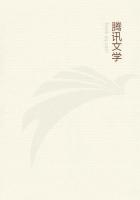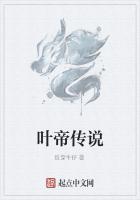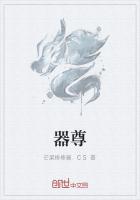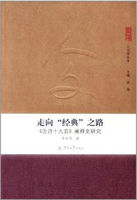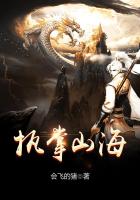Now you want to know what I meant when I talked of a bit of lime going out to sea, and forming part of a coral island, and then of a limestone rock, and then of a marble statue. Very good. Then look at this stone.
What a curious stone! Did it come from any place near here?
No. It came from near Dudley, in Staffordshire, where the soils are worlds on worlds older than they are here, though they were made in the same way as these and all other soils. But you are not listening to me.
Why, the stone is full of shells, and bits of coral; and what are these wonderful things coiled and tangled together, like the snakes in Medusa's hair in the picture? Are they snakes?
If they are, then they must be snakes who have all one head; for see, they are joined together at their larger ends; and snakes which are branched, too, which no snake ever was.
Yes. I suppose they are not snakes. And they grow out of a flower, too; and it has a stalk, jointed, too, as plants sometimes are; and as fishes' backbones are too. Is it a petrified plant or flower?
No; though I do not deny that it looks like one. The creature most akin to it which you ever saw is a star-fish.
What! one of the red star-fishes which one finds on the beach?
Its arms are not branched.
No. But there are star-fishes with branched arms still in the sea. You know that pretty book (and learned book, too), Forbes's British Star-fishes? You like to look it through for the sake of the vignettes,--the mermaid and her child playing in the sea.
Oh yes, and the kind bogie who is piping while the sandstars dance; and the other who is trying to pull out the star-fish which the oyster has caught.
Yes. But do you recollect the drawing of the Medusa's head, with its curling arms, branched again and again without end? Here it is. No, you shall not look at the vignettes now. We must mind business. Now look at this one; the Feather-star, with arms almost like fern-fronds. And in foreign seas there are many other branched star-fish beside.
But they have no stalks?
Do not be too sure of that. This very feather-star, soon after it is born, grows a tiny stalk, by which it holds on to corallines and sea-weeds; and it is not till afterwards that it breaks loose from that stalk, and swims away freely into the wide water. And in foreign seas there are several star-fish still who grow on stalks all their lives, as this fossil one did.
How strange that a live animal should grow on a stalk, like a flower!
Not quite like a flower. A flower has roots, by which it feeds in the soil. These things grow more like sea-weeds, which have no roots, but only hold on to the rock by the foot of the stalk, as a ship holds on by her anchor. But as for its being strange that live animals should grow on stalks, if it be strange it is common enough, like many far stranger things. For under the water are millions on millions of creatures, spreading for miles on miles, building up at last great reefs of rocks, and whole islands, which all grow rooted first to the rock, like sea-weeds; and what is more, they grow, most of them, from one common root, branching again and again, and every branchlet bearing hundreds of living creatures, so that the whole creation is at once one creature and many creatures. Do you not understand me?
No.
Then fancy to yourself a bush like that hawthorn bush, with numberless blossoms, and every blossom on that bush a separate living thing, with its own mouth, and arms, and stomach, budding and growing fresh live branches and fresh live flowers, as fast as the old ones die: and then you will see better what I mean.
How wonderful!
Yes; but not more wonderful than your finger, for it, too, is made up of numberless living things.
My finger made of living things?
What else can it be? When you cut your finger, does not the place heal?
Of course.
And what is healing but growing again? And how could the atoms of your fingers grow, and make fresh skin, if they were not each of them alive? There, I will not puzzle you with too much at once; you will know more about all that some day. Only remember now, that there is nothing wonderful in the world outside you but has its counterpart of something just as wonderful, and perhaps more wonderful, inside you. Man is the microcosm, the little world, said the philosophers of old; and philosophers nowadays are beginning to see that their old guess is actual fact and true.
But what are these curious sea-creatures called, which are animals, yet grow like plants?
They have more names than I can tell you, or you remember. Those which helped to make this bit of stone are called coral-insects: but they are not really insects, and are no more like insects than you are. Coral-polypes is the best name for them, because they have arms round their mouths, something like a cuttle-fish, which the ancients called Polypus. But the animal which you have seen likest to most of them is a sea-anemone.
Look now at this piece of fresh coral--for coral it is, though not like the coral which your sister wears in her necklace. You see it is full of pipes; in each of those pipes has lived what we will call, for the time being, a tiny sea-anemone, joined on to his brothers by some sort of flesh and skin; and all of them together have built up, out of the lime in the sea-water, this common house, or rather town, of lime.
But is it not strange and wonderful?
Of course it is: but so is everything when you begin to look into it; and if I were to go on, and tell you what sort of young ones these coral-polypes have, and what becomes of them, you would hear such wonders, that you would be ready to suspect that I was inventing nonsense, or talking in my dreams. But all that belongs to Madam How's deepest book of all, which is called the BOOK OF KIND: the book which children cannot understand, and in which only the very wisest men are able to spell out a few words, not knowing, and of course not daring to guess, what wonder may come next.
Now we will go back to our stone, and talk about how it was made, and how the stalked star-fish, which you mistook for a flower, ever got into the stone.








